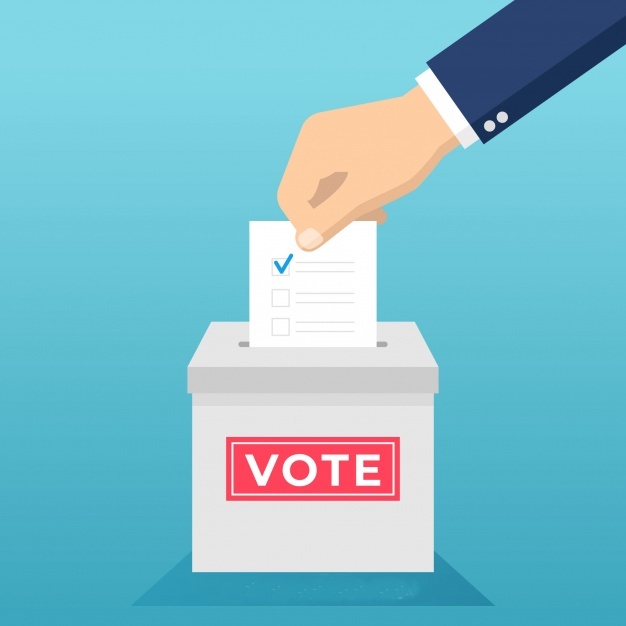In the world today, there are many countries where people are not given their basic fundamental rights. They are still bound to follow people who have better hierarchical standards. These people face problems as they are restricted and inhibited to have an opinion of their own. It is where democratic leadership comes into light.
Democratic Leadership, additionally known as Participative Leadership, is an area where individuals who are in some or other ways understood as unequal through hierarchical standards, have been given the rights to share power in decision-making equally.
Alternatively, Democratic Leadership is also known as shared leadership.
You can also understand it as a type of leadership style wherein members of a group are more actively participating in administrative and managerial processes. This class of leadership can be employed in any kind of organization, from private businesses to governments to schools.
In this post, we will be diving deep into the Democratic Leadership style and understand its key idiosyncrasies, how it works, and what key concepts are there in the base of Democratic Leadership style.
So, without any further ado, let us start unfolding the concepts of Democratic Leadership by understanding what democracy is-
What Is Democracy?

Democracy is a theory that everyone is conscious of.
In order to appreciate how a democratic leadership widens its horizon and channelizes associated functions, you must understand the age-old theory of democracy.
The word democracy has its own origins in Ancient Greece that is where the theory of democracy started.
The phrase “democracy” means “rule by the normal people.”
The important idea is that rather of someone verdict over people, such as in tyranny or oligarchy, the people who hold the strength to determine.
Ancient Theories behind Democratic Leadership
While the recent theory of democracy is proposed back to the Ancient Athens of 508 B.C., the idea of sanctioning as an organization has been through for much lengthier.
In the wide sense of the phrase, many people have organized around a village council and organized in a proper cooperative way.
But it was the impressions of Socrates, Aristotle, and Plato that eventually gave birth to democracy as a political philosophy.
In his outstanding book of Politics, Aristotle describes the benefits of democracy there.
The Greeks utilized democracy in various ways.
Solon established the main constitutional reforms by stopping the slavery of the Athenians by fellow Athenians and eliminated the idea of privilege-by-birth from the nation.
After Solon, the nation is experienced more tyranny but turned back to representative administration under Cleisthenes and Ecclesia.
In fact, Athenians utilized the word ‘democracy’ for the main time under the Cleisthenes’ rule.
Let us now have a look at the key practices associated with Democratic Leadership-
Practices of democratic leadership
There are some best practices of a Democratic Leadership as:
1. Keeping a Note of All the Ideas
It suggested since democratic leaders do not employ every strategy, they would have a profit from maintaining a track of those ideas through the decision-making system. If something may not help today, it can be helpful in the future.
2. Establishing a Proper Decision
In the process making method, all are not eager about the possibility of a lengthy and drawn-out method for making judgments. Employees may need proper feedback quickly rather than delayed, and there should be particular problems that are not compelled to go through a decision-making committee.
If there is a reasonable difficulty or common problem, these should be classified differently, so the judgments can be prepared rapidly.
3. Implicating the Right People
If there is an IT crisis, again, those with creativity in the technical problems should be implicated in the choice.
When those influenced persons should be comprised, some difficulties expect those who have proper training and understanding of the problem to have the maximum information.
4. Making the Rejection into another Chance
The democratic leader is getting on to have rejection in a lot of ideas. They should evolve at conveying this respectfully and carefully.
They should instruct employees why their strategy was not utilized, and how it could be utilized for the next time if acceptable.
Democratic Leaders Prompt Productivity
In the proper cooperation, affiliation, and efficient flow of ideas, the organizations can be confident that they are discovering about the largely pressing difficulties, and explanations since workers from several offices are asked to contribute to the decision-making process.
Democratic leaders always need to be confident to have control when essential and carefully reject the ideas that do not make sense for the association. Still, the advantages of improved engagement and the quality input are worth having a look at this procedure.
The Democratic leadership is always confused with the indication of the political philosophy of democracy. When the resemblances are there, the style also has its unique quirks and variations.
To comprehend democratic leadership, you need to understand the balancing act of enabling everyone to contribute to the decision-making and assuring the institution achieves its goals.
So, here, we’ll analyze the theories around the democratic leadership and their traits that create the democratic leadership framework.
We’ll also analyze what it compels from the leader before assessing the advantages and downsides to the technique. Eventually, we’ll look at the administration criterion through a few examples of democratic leaders-
Know the Different Concepts about Democratic Leadership

When we start assessing the main traits of democratic leadership, it’s favorable to peek at the various theories about the leadership style. Virtually, to comprehend what democracy means and what are the traits of the democratic leadership theory-
1. The objective of Democratic Leadership
All the individuals are considered equal and allowed to participate, express put forth their ideas and opinions and be a part of the discussion.
It has been found that this sort of leadership has proved to be one of the most effective types that not only succeed in giving equal rights but even leads to productivity.
2. Foundation of Democratic Leadership
The foundation of democratic leadership is not only to provide equal rights to individuals, but a lot of other elements are present under the agenda of democratic leadership.
- Democratic leaders put stress on collaboration and the free flow of ideas and viewpoints.
- Even though the prospect of being a part of the discussion and the entire process is given, democratic leaders decide who is a part of the committee or group making judgments.
- Responsibility is shared amidst all the members of a group with the leader assigned to provide guidance, keep discussions stable and maintain dignity.
- Participative leadership encourages mutual respect among those who are involved in the discussion and contribute towards ideas.
- In democratic leadership, leaders are usually seen to be a part of NGOs, school boards and even companies with an open mindset.
Importance of a Democratic Leadership for Businesses
One of the most crucial aspects of this leadership style is understanding the scenarios in which it helps the company to grow and outshine. Participative leadership is, in a way, the same as affiliative leadership in terms of teamwork and collaboration.
Democratic leadership does not face or deal with challenging or stressful events.
It is more to establishing equality amongst individuals and to voice a unanimous opinion. Another essential feature of this leadership style is that it promotes healthy colleague relationships and treats everyone the same.
Thus, avoiding situations of conflict or bitter environment is the one key feature of Democratic Leadership.
Democratic leaders even permit their employees to have a say in matters other than their assigned duties. It results in boosting their confidence, and it leads to better engagement and productivity.
Not only this, the dedication towards their work ends up giving motivation to every team member.
Notable Characteristics of a Democratic Leadership
It is clear by now what democratic leadership does and how the leaders help in balancing the discussions that take place. However, what qualities or traits must a democratic leader possess to uphold the position?
Since the decision-making power does not remain with a leader anymore. As a result, their importance or responsibilities also fade out. But they must have some inherited skills to manage the system properly.
Some of the chief characteristics of democratic leadership include:
- Even though the group leader holds the final say in any decision, members of the group are still given a chance to express their ideas as well.
- As the equal and unbiased opportunity is given to every individual, they feel more engaged in the entire process.
- Creativity and experimentation of new ideas are encouraged and rewarded.
Apart from these qualities, research has shown that there are a few more characteristics inculcated by democratic leaders that include:
1. Intelligence in Democratic Leadership
It is evident that all sorts of leadership styles require the leaders to be intelligent and skilled, democratic leadership puts more emphasis on it. Since a democratic leader is responsible for keeping all the members and parts of a system together, they must possess competency as well as intellect.
The leader must not only retain intelligence for understanding the industry and the professional aspects. He or she must have the emotional intelligence to ensure the systematic working of the system and that there are no conflicts.
2. Honesty in Democratic Leadership
To maintain a healthy relationship amongst the members of the committee, the leader must be honest. The discussion and leadership framework will only be useful if the leader is honest with his subordinates.
When it comes down to leadership, honesty can be a bit tricky trait to hold on to. A leader needs to make sure that situations don’t become vulnerable and out of control. A calm and healthy environment needs to be maintained, and it is only feasible if the leader is honest.
After all, a leader leads the whole team, and his or her traits affect the environment of the group.
3. Creative in Democratic Leadership
The entire process of democratic leadership is to allow individuals to voice their ideas. It results in having different innovative and creative ideas. So, to be able to appreciate these ideas, the leader needs to be creative enough to understand them and get on the same wavelength to give way to the ideas.
A leader needs to be creative to help other team members to think out of the box and come up with something unique. Creativity is often considered as an innate quality. It depends on your imagination and thought process of how you see things.
Creativity comes best in use when people are free to speak their minds and feel that their ideas are being appreciated and respected.
4. Fairness in Democratic Leadership
Since this leadership style is based upon people sharing their ideas openly, the leader must be fair with his decisions. It is not only favorable for the organization but benefits in balancing the members as there is then no bias.
Being fair helps in setting clearer guidelines for democratic leadership. If a set of processes is created for a specific objective that the company or organization wishes to achieve then, by inhibiting from getting involved in unfair means, the results will be beneficial for the organization.
Advantages & Disadvantages
Now, every field has some positive points and certain flaws too. It is necessary to focus on all the aspects collectively and make the most out of any leadership style.
Democratic leadership provides a platform where individuals are free to share their thoughts, ideas, and opinions. Its outcome helps in having more innovative and creative solutions to problems. As this process is quite engaging, it nurtures a healthy atmosphere and the right working conditions.
Research has shown that the democratic leadership style leads to higher productivity among groups and members.
On the other hand, it has some potential downsides too. To name a few, there are scenarios when there is no bright assortment of roles, and time is a constraint. It ends up messing everything due to communication failures and unfinished business.
Sometimes, the leaders are not skilled enough to contribute effectively to the process and lead a group efficiently. Even the group members, at times, do not hold adequate knowledge and fail to be a part of the decision-making process.
If the democratic leader fails to be fair or just with the team members, then, they might feel like their ideas are not respected, leading to decreased employee satisfaction and morale.
Example of Democratic Leadership

As democratic leadership has proved to be one of the most effective and beneficial leadership styles, many companies have adopted this and applied in their routine.
There are some famous examples of companies that have acted upon this leadership and their leaders who made this possible. These are;
- Google – Larry Page
- Coca-Cola – Muhtar Kent
- The Mayo Clinic – The Mayo Family
These and many more companies have aced in their areas of work since they opted for democratic leadership. It not only advanced their performance but then again, gave the same opportunity to everyone in the team to present their ideas which added to the overall growth and success.
Wrap Up!
Democratic leadership is undoubtedly one of the most favorable and cherished leadership frameworks. The concept of giving equal opportunity and shared responsibility has resulted in enhanced engagement and involvement of the entire team.
It has become popular amongst CEOs and members alike. But at the same time, it is a challenging process to implement and balance.
A pure form of this leadership framework can, in practice be very slow in decision-making. The agenda of taking unanimous decisions can even turn out to have inevitable repercussions with split decisions.
Indeed, it pours creativity that significantly improves a company’s performance and growth rate. If all the efforts are made fairly, and the best of each one’s capabilities are put to use, the group together can achieve better results in less time.
The democratic framework does support a more equal and innovative ideology and setting for people to achieve the best possible outcome.
So, what are your thoughts about the Democratic Leadership? Do you find it the right style of leadership for your company? Share your views with us in the comments below.
Pinky is an MBA in Marketing from the University of Mumbai. She loves helping people out in learning Marketing and sharing latest ideas and tactics for growing businesses.
